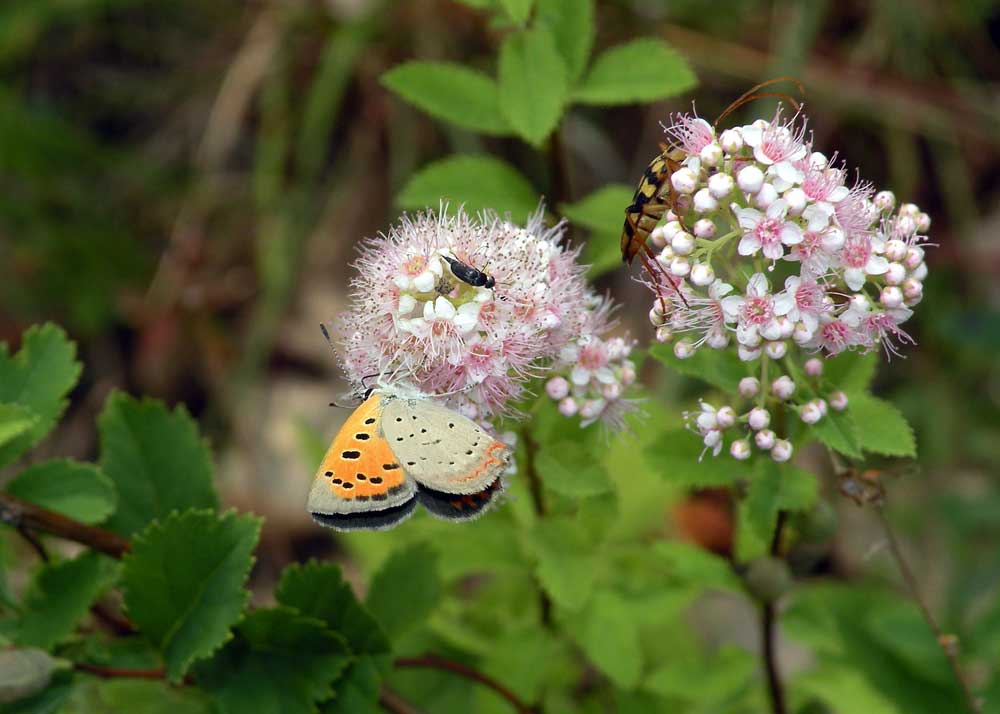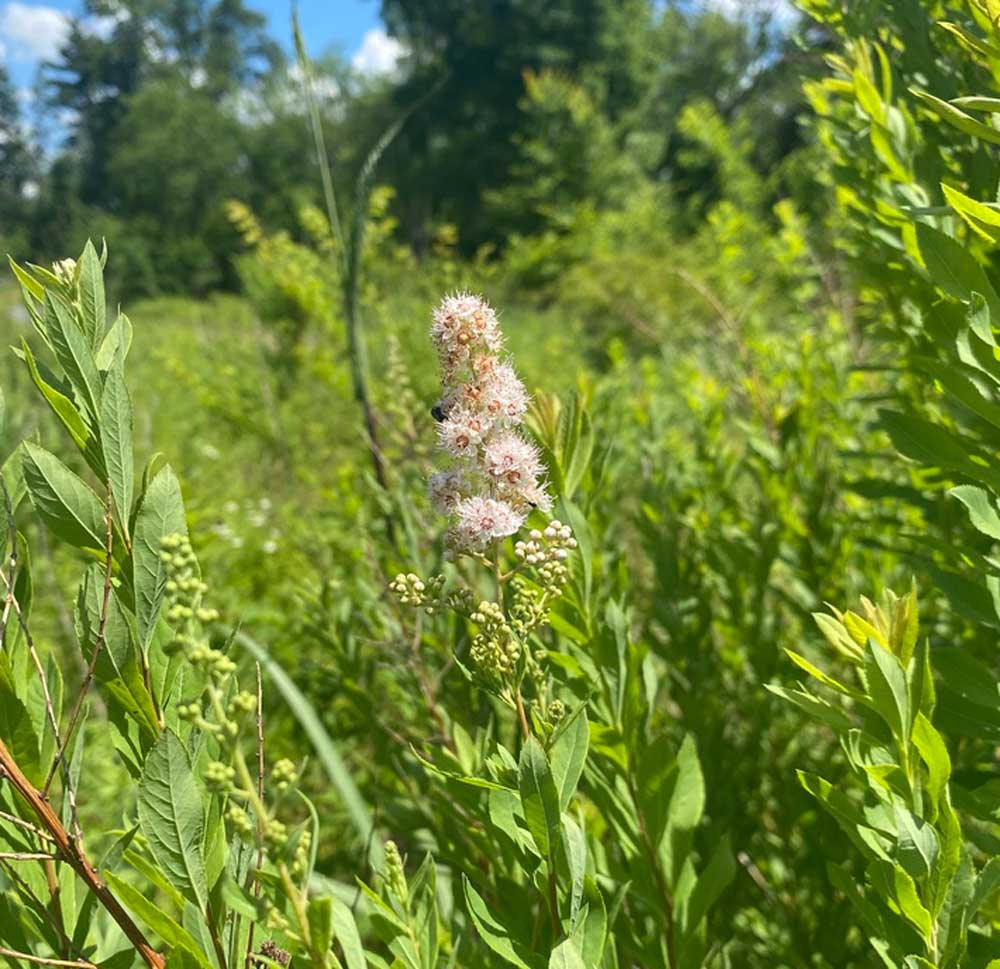Fragrant White Flowers Bloom from June to September
Spiraea alba, commonly known as White Meadowsweet, is a deciduous shrub native to eastern and midwestern North America. It belongs to the Rosaceae family and is well-suited to moist environments such as meadows, swamps, and riverbanks.

Gardening Uses and Benefits
White Meadowsweet is valued in gardens for its attractive, fragrant white flowers that bloom from June to September. It can be used in various landscape settings, including butterfly gardens, rain gardens, and naturalized areas. The plant’s dense, mounding form makes it ideal for mass plantings or as a border plant. It is low maintenance and can tolerate a range of soil conditions, from wet to occasionally dry.

Companion Planting
White Meadowsweet pairs well with other moisture-loving plants that thrive in similar conditions:
- Joe-Pye Weed (Eutrochium spp.): Known for its tall stature and clusters of pink flowers, it complements the white blooms of White Meadowsweet.
- Swamp Milkweed (Asclepias incarnata): This plant attracts butterflies and provides a striking contrast with its pink flowers.
- Blue Flag Iris (Iris versicolor): Its vibrant blue flowers offer a beautiful color contrast in wetland gardens.
- Cardinal Flower (Lobelia cardinalis): With its bright red flowers, it adds a splash of color and attracts hummingbirds.
Interesting Facts
- Native Alternative: Spiraea alba serves as an excellent native alternative to the more commonly used Japanese Spirea in traditional landscapes.
- Flower Structure: The plant’s flowers are arranged in conical clusters, providing a long bloom season that enhances garden aesthetics.
- Traditional Medicine: Historically, it has been used in traditional medicine to treat ailments like fever and inflammation.

Specialist Relationships with Invertebrates and Other Animals
Spiraea alba is a larval host for the Spring Azure butterfly (Celastrina ladon) and supports 92 species of butterflies and moths, including the threatened 3-Striped Oncocnemis. It attracts various native bees and small butterflies, providing essential nectar sources. Birds such as the Ruffed Grouse and Greater Prairie Chicken use this shrub for food and protective cover.
Ecosystem Contributions
This shrub plays a vital role in supporting biodiversity by providing habitat and food for pollinators and birds. Its dense growth helps stabilize soil, making it suitable for erosion control in wetland areas.
Cultivation Details
- Soil Preferences: Prefers moist to wet soils but can tolerate occasional flooding. It thrives in full sun to partial shade.
- Growth Habits: Typically grows 3 to 6 feet tall with a spread of 2 to 4 feet. It has medium growth rates and requires consistent watering.
- Maintenance: Minimal pruning is required; however, deadheading after blooming can help manage seeding.
Conclusion
Spiraea alba is a valuable addition to biodiversity-friendly gardens due to its ecological benefits and ornamental appeal. Its ability to attract pollinators and serve as a host plant for numerous butterfly species makes it an essential component of any native plant garden aimed at enhancing local biodiversity. As a native alternative to Japanese Spirea, it promotes biodiversity by attracting pollinators and stabilizing soil.
